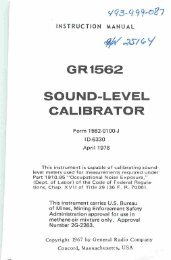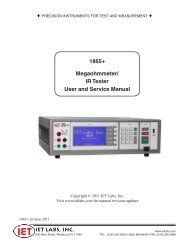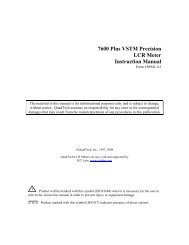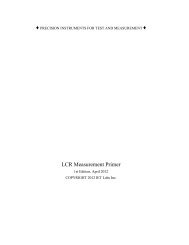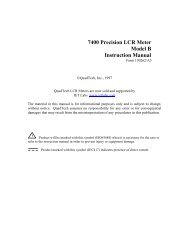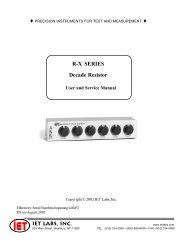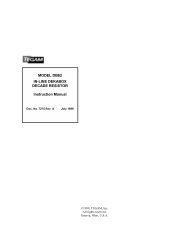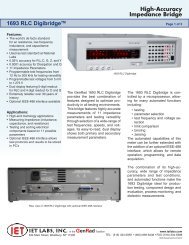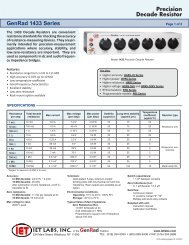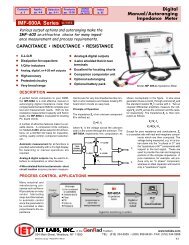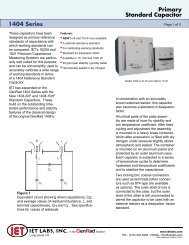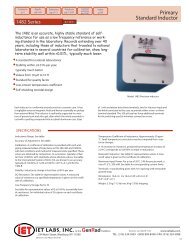Handbook of High Speed Photography - IET Labs, Inc.
Handbook of High Speed Photography - IET Labs, Inc.
Handbook of High Speed Photography - IET Labs, Inc.
Create successful ePaper yourself
Turn your PDF publications into a flip-book with our unique Google optimized e-Paper software.
1.3 USING THE STROBOSCOPE WITH MOVING FILM.<br />
It is impossible to study some complex motions using the multi<br />
ple-exposure technique. This is especially so when the motion is con<br />
fined to a small area or is characterized by a change <strong>of</strong> shape rather<br />
than a translational motion, that is, the subject does not "get out <strong>of</strong><br />
its own way" to permit the photographing <strong>of</strong> separate and discreet suc<br />
cessive images. For example, the changing stress patterns in a sample<br />
<strong>of</strong> material (see Figure 1-6). Studies <strong>of</strong> this type can be made by means<br />
<strong>of</strong> a high-speed motion picture camera, such as the Hycam, Fastax,<br />
etc., and a stroboscope. These cameras can move film past the camera<br />
lens at a high rate <strong>of</strong> speed so that thousands <strong>of</strong> frames per second can<br />
be exposed. The series <strong>of</strong> pictures produced by this method will dis<br />
play successive phases <strong>of</strong> a single cycle <strong>of</strong> the studied motion.<br />
The stroboscope is also a very useful light source for use with<br />
high-speed movie cameras. The short duration flash <strong>of</strong> the stroboscope<br />
stops motion that would normally be blurred even when photographed by<br />
the fastest <strong>of</strong> movie cameras, as would the motion <strong>of</strong> a high-speed pro<br />
jectile. This improvement is especially advantageous where frame-byframe<br />
analysis <strong>of</strong> the film must be made. For a more detailed descrip<br />
tion <strong>of</strong> the use <strong>of</strong> a stroboscopic light sources with moving-film devices,<br />
refer to Section 6.<br />
The stroboscope can also be used to advantage in photographing<br />
heat-sensitive subjects, e.g., biological specimens. The stroboscope,<br />
due to its extremely low duty cycle or "on" time, is a relatively cool<br />
source <strong>of</strong> light.




